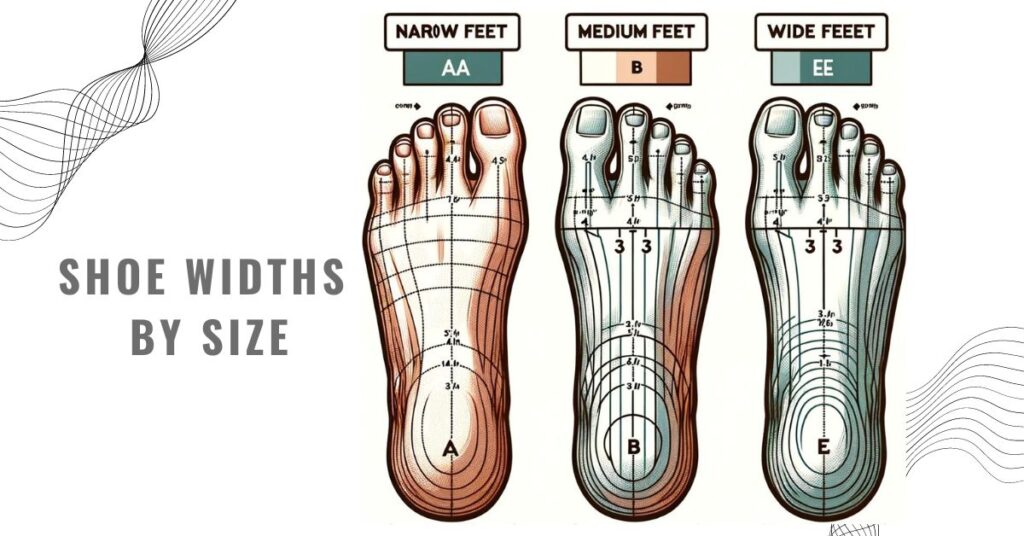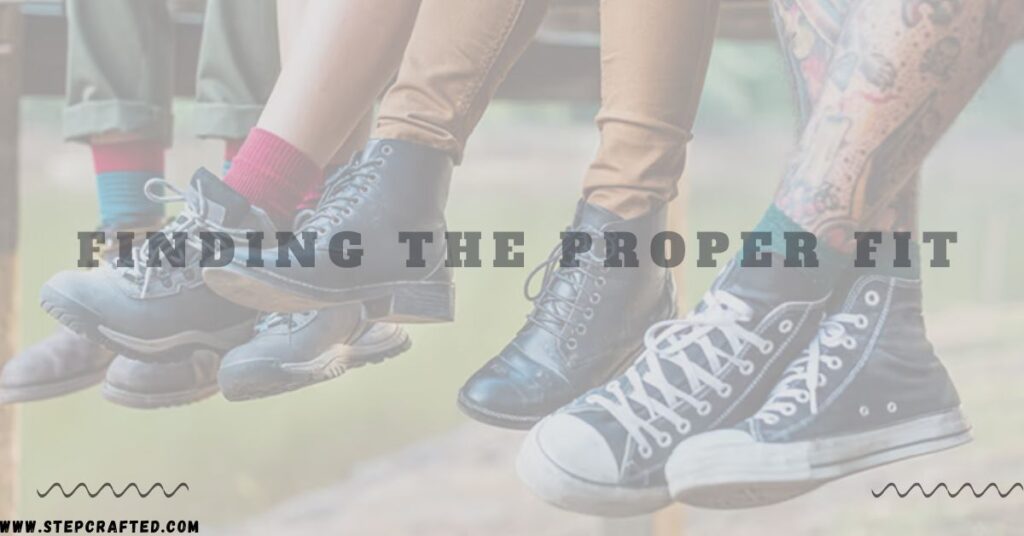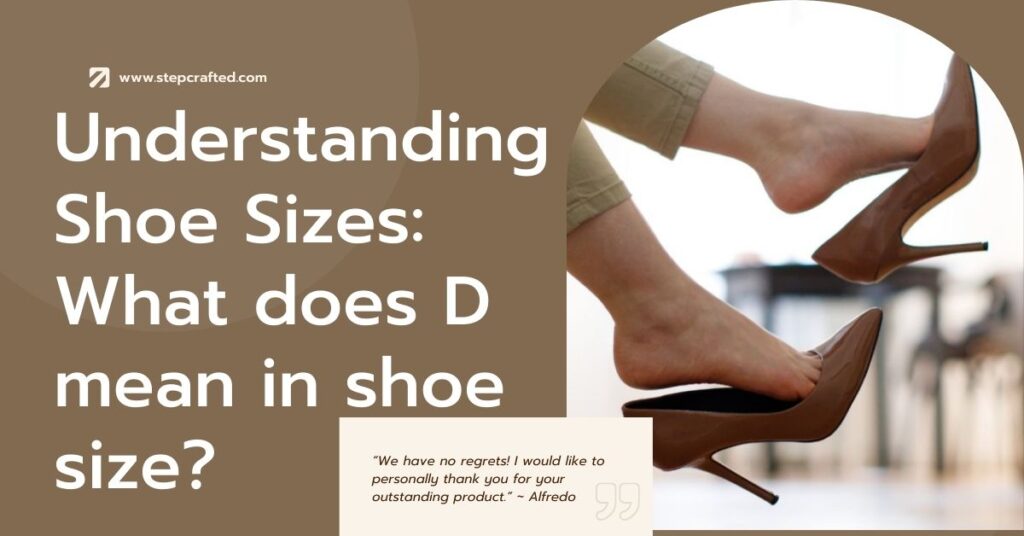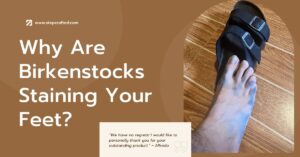When shopping for shoes, navigating the complexities of shoe sizing often feels like deciphering an intricate code. Central to this puzzle is the letter “D,” a symbol that carries significant weight in the realm of shoe width.
Contents
ToggleThis letter plays a pivotal role in finding the right fit, serving as a guidepost for those in pursuit of comfort and style. Understanding the What does D mean in shoe size, as it directly influences the selection process, affecting both the comfort and the health of your feet.
The letter “D” in shoe sizing is not just a random marker; it signifies a standard width for men and a wide width for women, standing as a benchmark for those on the hunt for the perfect shoe. For men, a “D” width is considered the norm, fitting the majority comfortably, whereas for women, it indicates a generous fit, providing extra room for wider feet.
This distinction highlights the importance of gender-specific sizing charts and the need to pay close attention to width as well as length when selecting footwear.
Yet, the implications of choosing a “D” width shoe extend beyond mere comfort. It’s about ensuring that the footwear you select supports your daily activities without compromising on style or function.
Whether you’re an athlete requiring precise support and mobility, or someone with a wider foot seeking relief from the confines of narrow shoes, understanding What does D mean in shoe size opens up a world of possibilities. It’s about embracing the diversity of foot shapes and sizes, ensuring everyone can find their perfect match.
.But what exactly does D mean in shoe sizes, and how does it affect your shoe buying experience? Let’s dive in.
What does D mean in shoe size?
Wide width shoes serve as a beacon of comfort for those with broader feet, offering more than just additional space along the sole. These specialized shoes are crafted with the understanding that comfort is paramount, ensuring that every step taken is one of ease and relief. They’re engineered to cater to the unique needs of wider feet, providing ample room not just for the foot itself but also for the natural expansion that occurs throughout the day.
This thoughtful design is about embracing the foot in its entirety, giving it the freedom to breathe and move without the pinch of tight constraints that can lead to discomfort or even injury over time.
Beyond the immediate comfort, wide width shoes are about acknowledging the diversity of foot shapes and sizes. They represent a shift away from the one-size-fits-all approach, recognizing that footwear needs to be as varied as the individuals wearing them.
This inclusivity in shoe design ensures that everyone, regardless of foot width, can find shoes that fit well and feel good. The space afforded by wide width shoes allows for better circulation, reduces the risk of blisters and calluses, and supports healthier foot conditions. It’s not just about accommodating wider feet; it’s about providing a foundation for better foot health.
Moreover, the advantages of wide width shoes extend into the realm of performance and aesthetics. For athletes and active individuals, the right fit can significantly impact performance, offering stability and support where it’s needed most.
For others, finding stylish shoes that also provide comfort can be a challenge, but the increasing variety of wide width options means no one has to compromise style for comfort. Wide width shoes prove that functionality and fashion can go hand in hand, providing the space needed for both comfort and self-expression.
In this way, they offer a holistic approach to footwear, ensuring that every individual can step confidently into the world, knowing their feet are well-supported in every aspect.

Shoe Width Sizes Explained
Shoe width sizes, marked by letters such as A, B, D, E, and beyond, play a critical role in determining the comfort and fit of your footwear. This alphabetical system might seem cryptic at first glance, but it holds the key to unlocking a comfortable walking experience.
Each letter corresponds to a specific width, starting from the narrowest (A) to the widest (E and beyond), guiding individuals in their quest for the perfect shoe fit.
Understanding the nuances of this sizing system is not just about achieving a comfortable fit; it’s about ensuring that every shoe supports and enhances the natural shape and movement of your foot, preventing common issues like blisters, calluses, and even structural foot problems.
Navigating through the alphabet of shoe widths is essential in matching footwear to the unique contours of your feet. The width of a shoe influences not only how it feels on your foot but also how well it accommodates the natural expansion and contraction of your feet throughout the day.
A shoe that’s too narrow can constrict the foot, leading to discomfort and long-term issues, while a shoe that’s too wide may cause slippage and reduce stability. Therefore, gaining a deep understanding of shoe width sizes enables individuals to make informed decisions, ensuring that each pair of shoes brings them closer to the ideal balance of comfort and support.
Moreover, the importance of shoe width sizes extends beyond individual comfort, impacting overall foot health. Properly fitted shoes with the correct width can alleviate pressure on the foot, reducing the risk of conditions such as bunions, hammertoes, and other deformities.
This aspect of shoe fitting is particularly crucial for those with specific health concerns or foot shapes that require more precise accommodation.
By familiarizing oneself with the letter-based sizing system and consulting with footwear professionals when necessary, consumers can transform their shoe buying experience from a guesswork-driven process to an informed selection, leading to better foot health and enhanced daily comfort.
Understanding Shoe Widths by Letter
A/2A/4A Width: The Narrow Spectrum
- A Width: At the beginning of the width spectrum, an “A” width signifies a narrow shoe. This size is tailored for those with slimmer feet, ensuring a snug fit that avoids the excess space that can lead to slipping and discomfort.
- 2A and 4A Widths: Delving deeper into the narrow category, “2A” (AA) and “4A” (AAA) widths represent even more specialized options. Classified as extra narrow, these widths cater to individuals with very slender feet, providing a fit that closely hugs the foot to enhance stability and comfort.
B Widths: Standard and Narrow
- For Women: In women’s footwear, a “B” width is considered the standard, offering a balance between snugness and space that accommodates a wide range of foot shapes.
- For Men: Contrarily, for men, a “B” width falls into the narrow category. It’s tailored for those whose feet are not as wide as the average, ensuring that the shoe fits comfortably without the looseness that can impede proper foot alignment and stability.
D Widths: The Versatile Medium
- Men’s Standard: In men’s shoes, a “D” width is regarded as the medium or standard width. It’s the most prevalent size, designed to fit the majority of men comfortably, providing enough room without sacrificing a secure fit.
- Women’s Wide: For women, however, the “D” width enters the wide category. It offers additional space compared to standard women’s widths, accommodating those who need a bit more room for comfort, without veering into the overly spacious territory.
E/2E/4E Widths: Embracing Wider Needs
- E Widths: Identified as wide, “E” widths start to accommodate feet that require more room than what’s provided by the standard sizes. This width ensures that the foot has sufficient space to spread naturally, reducing the risk of compression and the discomfort it brings.
- 2E and 4E Widths: For feet that need even more space, “2E” and “4E” widths are classified as extra wide. These sizes are particularly beneficial for individuals with significantly wider feet, offering substantial room to ensure comfort, proper circulation, and avoidance of pressure points that can lead to foot health issues.
The Impact of Proper Width Sizing
Choosing the right shoe width is not merely about immediate comfort; it’s about long-term foot health and functionality. Ill-fitting shoes can lead to a myriad of issues, from blisters and calluses to more severe conditions like bunions and hammertoes.
By understanding What does D mean in shoe size and selecting the appropriate shoe width, you can significantly enhance your walking experience, ensure proper foot alignment, and avoid common foot ailments.
This guide to shoe widths underscores the importance of personalized fit in footwear. Whether you have narrow, standard, or wide feet, there’s a width out there designed to provide you with the best possible support and comfort.
Remember, the right shoe can make all the difference in your daily comfort and overall foot health, making it essential to choose wisely based on both length and width.
SHOE WIDTHS BY SIZE
Narrow/Extra Narrow Widths
- These widths are ideal for individuals with slender feet, ensuring the shoe fits snugly without slipping.
Medium Widths (Normal/Standard)
- Medium widths are designed for the average foot, providing balanced space without being too tight or too loose.
Wide/Extra Wide Widths
- Wide and extra-wide widths cater to those who need more room in their shoes, preventing discomfort and blisters.

How To Determine If You Need Wide Width Shoes
Determining whether you require wide width shoes can often be gauged by the comfort level and physical signs your feet exhibit while or after wearing standard-width footwear. Regular discomfort, such as pinching, tightness, or the feeling of constriction across the widest part of your feet, signals that your current shoes may not be providing the adequate space your feet naturally need.
This discomfort can manifest not only as a transient feeling but can also leave behind visible marks or indentations on the skin of your feet, highlighting areas where the shoe is too narrow and putting undue pressure.
Beyond the immediate signs of discomfort and marks, seeking a professional measurement of your feet can be a decisive step towards identifying the need for wide width shoes. Shoe stores and foot specialists have the tools and expertise to accurately measure the length and width of your feet, taking into account factors such as foot shape, arch height, and whether one foot is larger than the other.
This professional assessment can reveal nuances in your foot size that might not be immediately apparent, providing a clearer direction on whether a wider shoe could offer the comfort and support you’ve been missing.
Ultimately, the journey to finding the right shoe width involves both self-observation and professional advice. Paying attention to how your feet feel during and after wearing shoes can guide you towards considering wider options.
Coupling this personal insight with a professional measurement creates a solid foundation for making informed footwear choices. Opting for wide width shoes when signs point to their necessity can drastically improve your overall foot comfort, potentially alleviating recurring discomfort and preventing long-term foot health issues.
SHOE WIDTH CHART
To simplify the process, here’s a handy shoe width chart for both men and women, detailing the different widths available.
Women’s Shoe Width Chart
| Width | Description |
|---|---|
| 2A | Narrow |
| B | Standard |
| D | Wide |
| 2E | Extra Wide |
Men’s Shoe Width Chart
| Width | Description |
|---|---|
| A | Narrow |
| B | Standard |
| D | Wide |
| 2E | Extra Wide |
| 4E | Extra Extra Wide |
Finding the Proper Fit
Measuring Your Foot:
- Place a piece of paper on the ground against a wall.
- Step on the paper with your heel lightly touching the wall.
- Mark the longest part of your foot on the paper.
- Measure the distance from the wall to the mark.
This measurement will help you find the correct shoe length. For width, comparing this measurement against a shoe width chart can indicate whether you need a wider option.
When is Additional Width Needed?
- High Instep: A high instep can require more room in the shoe, making wider widths a better choice.
- Bunions: Bunions often necessitate wider shoes to reduce pressure on the big toe.
- Swelling: Feet that tend to swell, either due to medical conditions or activity, may fit more comfortably in wider shoes.
Key Takeaways
- “D” width is standard for men and wide for women.
- Understanding shoe width letters is crucial for comfort.
- Measuring both the length and width of your foot can guide you to the best fitting shoes.
- Consider wider widths if you have a high instep, bunions, or experience foot swelling.
FAQ
Can I wear wide shoes even if I don’t have wide feet?
While you can, it’s not recommended unless you prefer the extra space. Too wide shoes can lead to slippage and discomfort.
How often should I measure my feet?
It’s a good idea to measure your feet every few years or after significant life events like pregnancy, as your shoe size can change over time.
Are there specific brands that cater to wide feet better than others?
Yes, some brands are known for their wide-width options and comfort for wider feet. It’s worth researching and trying on different brands to find the best fit for your needs.
Can inserts or orthotics affect my shoe width needs?
Absolutely. Inserts or custom orthotics can require more space in a shoe, making a wider width necessary for comfortable wear.
Is there a difference in width needs between running shoes and casual shoes?
Generally, yes. Running shoes often have more generous toe boxes and may fit slightly wider than casual shoes to accommodate foot expansion during exercise.
Can shoe width affect my balance or gait?
Shoes that are too narrow or too wide can indeed affect your balance and the way you walk, leading to potential discomfort or injury over time.
Are there any tips for shopping for wide shoes online?
Look for brands with good return policies, read reviews from customers with similar width needs, and consider using online tools for measuring your feet at home for a more accurate fit.
Read More!





